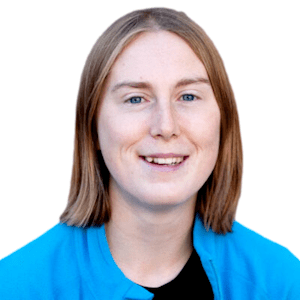A Spark in Childhood
Cat Easdon fell in love with computers as a child. She was captivated by how they worked, tinkering with both software and hardware until she confronted the foundational questions of trust, security, and privacy. These questions took on greater urgency after the 7/7 bombings in her hometown of London in 2005, which led to expanded surveillance in the name of security. Suddenly, the privacy risks she had been exploring felt very real.
A Technologist Turns to Policy
As Cat’s technical knowledge grew, spanning firmware, trusted co-processors, and the low-level architectures that run our devices, so did her awareness of how policy decisions shape the rights and freedoms of Internet users worldwide. She noticed that ill-informed policies could undermine even the strongest technical safeguards.
While researching ways to get involved in policy, she stumbled on the Internet Society. Its Early Career Fellowship (ECF) promised to bridge the gap between technology and policy, exactly what she felt was missing in her work.
I couldn’t believe I’d never heard of the Internet Society. The ECF showed me how much broader Internet governance is, beyond my security and privacy focus. I discovered challenges like widening Internet access and fighting against Internet shutdowns, topics I hadn’t really considered before.”
Through the fellowship, Cat gained a global perspective on digital rights and realized that technical expertise must inform policy discussions. The program’s mentorship, support, and international exposure enabled her to expand beyond hands-on engineering and engage in broader conversations on Internet governance and user-centric privacy solutions.
Why Cultural Differences Matter
One of the themes Cat explored during her fellowship was how cultural differences shape interpretations of privacy. While studying these perspectives, she realized that while the General Data Protection Regulation (GDPR) has had a significant positive impact, its European viewpoint needs to be complemented by other cultural norms, such as those around group and family privacy. Social media features that assume a single “close friends” group or gender-neutral friend recommendations can miss the mark, particularly for users trying to navigate conflicting cultural norms between their home country and their country of residence. (For instance, see Abokhodair and Vieweg’s paper on privacy in the Arab Gulf.)
This inquiry shaped her thinking as she developed her fellowship project, encouraging her to design more inclusive, context-aware privacy tools. To address these cultural blind spots, Cat developed a persona-based privacy threat modeling method, using contrasting user profiles to spot potential design flaws. This ensures privacy frameworks reflect real-world needs, not just theoretical assumptions.
Engineering Privacy: Beyond Legal Compliance
Cat is now a privacy engineer who tackles hands-on technical challenges daily. She points out that privacy isn’t merely about compliance documents; it demands serious engineering. A seemingly simple rule, “delete data after two weeks,” becomes complex in cloud-based environments with cross-border data transfers and third-party providers. If the system architecture doesn’t match the legal promise, user privacy remains at risk.
At the same time, she stresses that technology alone can’t fix unjust data practices. “All the encryption and pseudonymization in the world won’t make unfair data collection fair,” she explains. Ethical and policy-level discussions are just as vital to ensure privacy is respected in the first place.
Driving Real-World Impact
As part of her fellowship experience, Cat developed a user-friendly privacy education course that applied what she was learning about technical policy integration in real-time. The course breaks down complex concepts like secure multi-party computation and differential privacy into everyday language. By integrating culturally aware threat modeling, it helps people recognize how certain design features or data-sharing practices might put them at risk, given their specific cultural or social context.
The course drew significant interest during the fellowship symposium, and Cat is now gathering feedback and expanding its content. In the meantime, her involvement with the Internet Society has been crucial in amplifying her technical voice, helping her illustrate how thoughtful engineering can drive meaningful change in the broader Internet ecosystem.
Looking Ahead: Building on the Fellowship’s Impact
Cat believes privacy engineering is at the same stage as security engineering was in the early 2000s, on the verge of standardization but still lacking unified best practices. She’s expanding her course with interactive content and real-world scenarios to bridge the gap between academic theory and practical application.
Through the Internet Society’s Early Career Fellowship, Cat found the platform she needed to merge her technical expertise with policy advocacy. The program’s mentorship, resources, and global network gave her the confidence and visibility to scale her work and contribute to more inclusive digital rights frameworks.
For anyone interested in shaping the digital world, Cat offers this advice: “Don’t hesitate to jump right in. There’s an immense need for cross-disciplinary voices in privacy research and engineering. Your work could truly improve how people experience the Internet every single day.”
Today, from her home in Austria, Cat continues to champion privacy as both a personal right and a societal cornerstone.

